All images courtesy of Getty Images/Oasis Facebook (official)

By Andrew Daly
andrew@vinylwriter.com
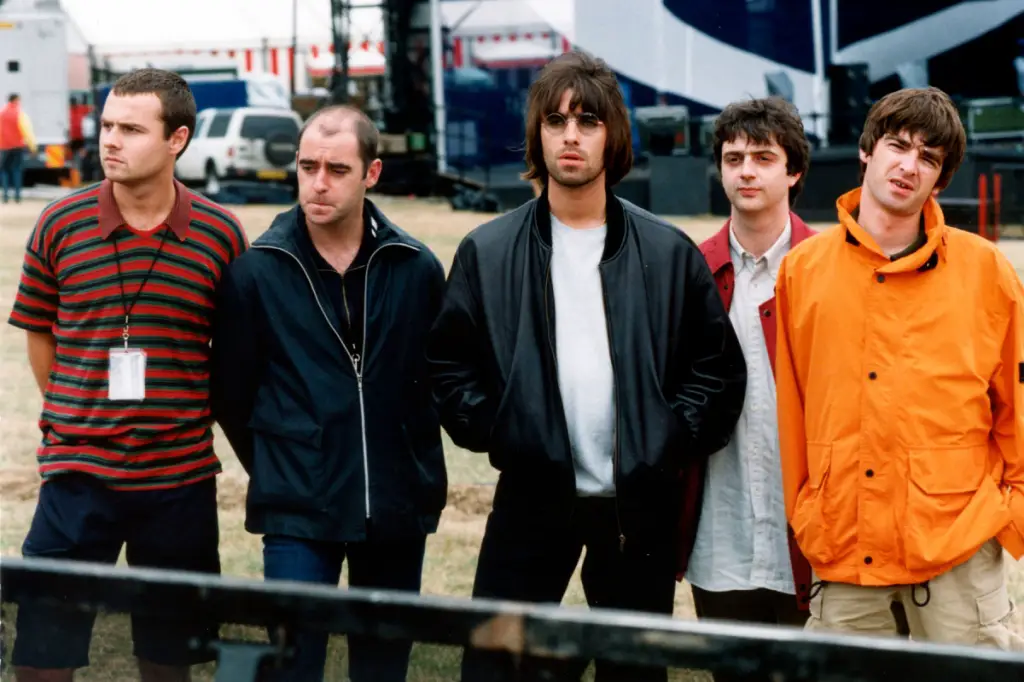
2021 marks the twenty-fifth anniversary of Oasis’ groundbreaking, two-night gig at Knebworth Park in 1996, a spectacular moment in time, where Oasis played for 250,000 ravenous fans, and in doing so, officially marked themselves the poster children for the new era of British Rock also known as Brit-Pop.
As expected, there have been waves upon waves of nostalgia associated with Oasis over the course of the last few months, and soon after the legendary Knebworth shows were finally officially released, Liam Gallagher announced several sold-out solo shows of his own, for the summer of 2022, at Knebworth Park, to commemorate the 1996 shows.
Looking back, it’s hard to believe that those now-legendary shows were a quarter-century ago, and it’s even harder to believe that Oasis ceased to exist as a working band nearly thirteen years ago, in 2009. Interestingly, the passage of time has done nothing to satiate Oasis’ detractors, who still deride, and belittle Oasis’ accomplishments. Oasis’ most prominent contemporaries, The Verve, Suede, Radiohead, and of course, Blur, will always be, at least by some, considered more mature, more experimental, and therefore, according to their critics — more worthy — of critical praise.
Oasis, and its figureheads, Noel and Liam Gallagher, were never one’s to ingratiate themselves to anybody, ever, and their working-class attitude, which was more akin to a football (Soccer) player’s mentality, was a far cry from the brooding, posh, art school cast of mind, which the members of Blur and Radiohead represented. When it came to the Gallagher brothers, and their cohorts, they were more the type to dust you in cocaine and douse you in whiskey, and if you took issue with that, they’d unceremoniously kick you in the teeth before they left you for dead.
It was this take no prisoners attitude, coupled with unbridled swagger, and voracious machismo which oozed out of every orifice that propelled Oasis to the top of the proverbial heap. Never a band to hide its influences or intentions, Oasis’s brazen arrogance was enigmatically endearing, and while the band may have made no bones about its relevance, and self-imposed importance, the fact remains is that Oasis had the talent, and more importantly — the songs — to back it up, and they did so, year after year, album after album.
So, today, to commemorate the mighty Oasis’ accomplishments, we’re ranking their studio albums. No, this is not going to be the typical list that bows down to the admittedly great Definitely Maybe, and (What’s The Story) Morning Glory? So, if you came here for that, you’re going to be disappointed, but if you’re looking for something fresh, and perhaps slightly inflammatory, then let’s see what’s on the road ahead.
8)  Heathen Chemistry (2002)
Heathen Chemistry (2002)
Ranking Oasis’ albums can be extremely difficult, as they honestly, and truly never made a bad record. This said some are better than others, and when it comes to Heathen Chemistry, we are of the opinion that it’s their weakest effort. While this may be true, the album is still very important to the history of the band, as it is the first to feature new members, Andy Bell on bass, and Gem Archer on rhythm guitar, who replaced the departed Paul McGuigan, and Paul “Bonehead” Arthurs respectively. McGuigan and Arthurs were solid players, as well as founding members, but Bell and Archer brought an elevated level of musicianship and a certain maturity which perhaps was not present previously.
The album also marks the final appearance of long-time drummer, Alan White, who was subsequently replaced by Zak Starkey during the album’s touring cycle. The album is not without its highlights, such as, “Stop Crying Your Heart Out,” “Little By Little,” “Songbird,” “She Is Love,” and “The Hindu Times,” but overall, while the album is strong, it still reflects a band in transition, and for that reason, it earns its placement as last in line on our list. Also of note, it was around this time that Liam Gallagher began to develop significant vocal issues, which would marry his performances over the course of the tour for Heathen Chemistry, so it was a bit of a murky time for Oasis.
7) 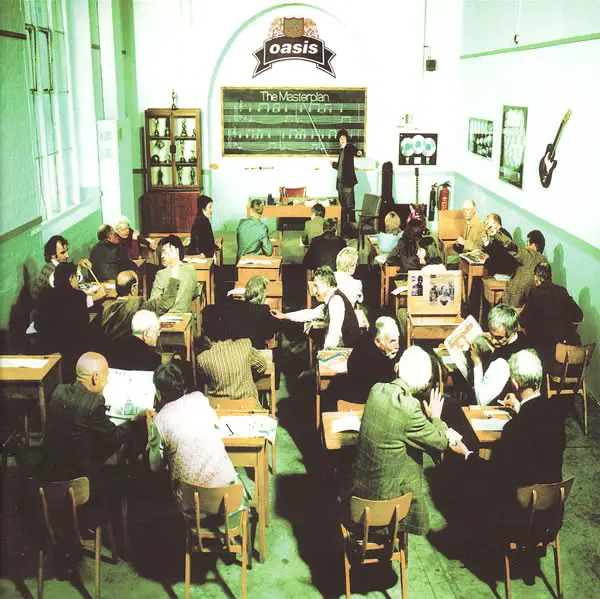 The Masterplan (1998)
The Masterplan (1998)
Oasis’ greatest strength, especially in their early years, was the heat-seeking weapon in Noel Gallagher that the band possessed. By this I mean, that Noel Gallagher was an unstoppable force of nature when it came to writing damn good songs. Simply put, in his era, and perhaps throughout music history, the man has few, if any equals. This said, one of Oasis’ greatest weaknesses as a band was perhaps judgment, and overly immersing themselves in bygone reverence for the tactics of their idols. An example of this was the outdated, yet repeated decision to hold back some of the band’s finest songs as b-sides, instead of including them on Oasis’ records, which brings me to the band’s 1998 album, The Masterplan.
Officially, The Masterplan is not an Oasis “studio record” perse, no, what it really serves as is a compilation of sorts for all the band’s b-sides to that point. So, its inclusion on this list falls into a sort of gray area, but nevertheless, if we are to think of it as an “album,” then as I mentioned before, it contains some of the finest tracks the band ever laid to tape, at least to that point. Songs such as, “The Masterplan,” “Fade Away,” “Talk Tonight,” “Listen Up,” and “Rockin’ Chair” put on full display the endless reservoir of transcendent songs this band was drawing from. Retrospectively, one can only imagine how much higher Oasis may have climbed with just a touch of decision-making added into the mix. Ultimately, The Masterplan comes in at this spot on the list simply due to the fact that it is not a true “studio record,” and we simply can’t justify it climbing higher given that fact.
6)  Dig Out Your Soul (2008)
Dig Out Your Soul (2008)
Dig Out Your Soul serves as an important record for Oasis. First, and sadly, it serves as the last studio record the band would ever put out, as they would implode during the final leg of the album’s supporting tour, in 2009. Second, as previously mentioned, the addition of Andy Bell, Gem Archer, and subsequently, Zak Starkey, brought a very real maturity to the band. After a rocky few years, which involved the new lineup settling in, and also massive issues with Liam Gallagher’s singing voice, the band had finally had reached a sort of musical Zen. Liam had sorted his voice out, was now writing songs, and both he and his brother had removed drugs, and alcohol from their lives, which brought extreme clarity to the songwriting process, a clarity that had not been there as recently as the late 90s, and early 2000s. For listeners, Dig Out Your Soul represents the culmination of everything Oasis had worked toward, and been through to that point. The songwriting is deep, and the musicianship is vibrant and features a level of proficiency that is earned through years of touring and hard-fought battles. Tracks such as “The Turning,” “Falling Down,” and “The Shock Of Lighting” prove it.
By this juncture, Oasis was a veteran band, who had fought and won many wars together, which is where the duality of this record comes into play. While Oasis as a band was musically firing on all cylinders in a way that they perhaps had not in years, internally, the band was tearing at the seams. After the recording of Dig Out Your Soul, Zak Starkey would fall out with the Gallaghers, and would soon be replaced by veteran drummer, Chris Sharrock. More importantly, Liam and Noel Gallagher’s notorious rivalry had somewhere along the way turned into genuine hatred, which would ultimately destroy the band. On tour for Dig Out Your Soul, the band would put on some of the best performances of its live career, with the lineup of Bell, Archer, Sharrock, and the brothers Gallagher probably representing the band’s best. For those that saw these shows, fans were treated to a band in top form, but one which was boiling over like a raging volcano. Liam’s swagger often turned to anger on stage, and eventually, he directed it at his brother, which ultimately, put an end to Oasis.
5) 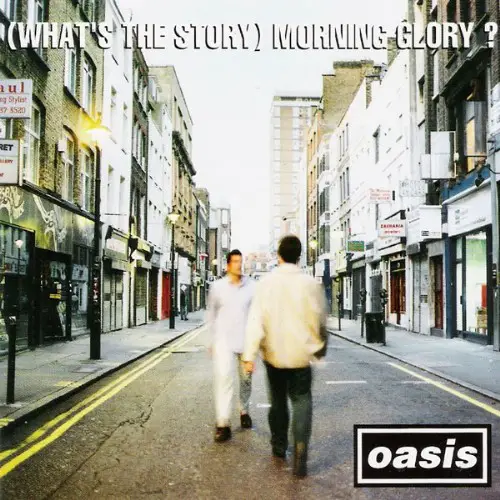 (What’s The Story) Morning Glory? (1995)
(What’s The Story) Morning Glory? (1995)
Not a whole lot can be said about this record that hasn’t been said already. It’s a record which most would define as “Oasis’ best.” It’s a record that typically serves as “one of the best of the decade,” and is generally considered “one of the best of all time.” Tracks such as “Don’t Look Back In Anger,” “Champagne Supernova,” “Some Might Say,” and of course, “Wonderwall” are tracks that basically could soundtrack the 1990s all on their own, and more or less…they do. There are many who will read this and will be outraged over the placement of (What’s The Story) Morning Glory? on this list, still, here we are.
There are a lot of reasons to love this album, and really, there aren’t any reasons to dislike it. If we wanted to pick it apart, we can say that the production is a bit treble-heavy, and perhaps a touch overblown, but that’s typical of Oasis, and if you love the band, then you don’t mind — remember that — it’s true, and it’s useful information for later. Ultimately, (What’s The Story) Morning Glory? is loaded with classic tunes, which other bands could only dream they had written, and the supporting tour was the stuff of legend on and off the stage, featuring monster shows at Maine Road, Knebworth Park, and more. The reality is, like you, we LOVE this record. So, why isn’t this album topping the list? The answer is…we can’t explain it just yet, but if you keep reading, you’ll find the answer you seek, we promise. That may seem like a cop-out now, but trust us — it isn’t.
4)  Definitely Maybe (1994)
Definitely Maybe (1994)
Uh-oh, another inflammatory move here. After reading the last entry, surely you thought that if (What’s The Story) Morning Glory? wasn’t topping this list, then certainly, Definitely Maybe would be. Well, if you wagered on that, you’d be wrong. Now, as far as Definitely Maybe is concerned, it is a great record, by a great band, and as far as debut albums go, it’s up there, and you’d be hard-pressed to find one which betters it. Songs such as “Supersonic,” “Live Forever,” “Cigarettes & Alcohol,” “Rock ‘N’ Roll Star,” and “Slide Away” are genre staples and are songs which will forever live in infamy. Still, when it comes to Definitely Maybe, there are issues. For starters, as good as these songs are, the band hasn’t fully found its footing here in terms of sound. With Tony McCarroll on drums, some of the songs definitely leave something to be desired (which is why Noel Gallagher fired him), as they don’t pop in the same way they did in the live setting after Alan White joined the band.
Second, again, as good as this record is, it has its issues, and Noel Gallagher’s decision to hold back certain songs as b-sides is one of them. Some puzzling choices leave the listener wondering if the album could have been even more coherent, and ultimately, thinking on what could have been. An example of which would be the mind-numbing choice to not include “Whatever,” one of the band’s best songs on the album, and instead, feature a song like “Digsy’s Diner” in its place. At the end of the day, one could say we are nitpicking at a great album, and perhaps we are, but as good of a debut as Definitely Maybe is, the fact remains that the band did better it several times over. Definitely Maybe contains a multitude of stone-cold classic tunes, but it does not feature Oasis at its best, and fans would be lying if they said those same tracks didn’t sound better as the band matured. Simply put, Definitely Maybe represents a band at its hungriest, but not at its best.
3)  Standing On The Shoulder Of Giants (2000)
Standing On The Shoulder Of Giants (2000)
One get’s the sense that Standing On The Shoulder Of Giants is not one of the most well-loved Oasis records, and honestly, it’s easy to see why at least on the surface. Dig deeper though, and in this album, you will find a true gem, one which features some of the band’s most inventive songwriting, in-depth lyricism, and unique, tripped-out, psychedelic vibe. Standing On The Shoulders Of Giants is an important record for many reasons, the first of which is that it marks the end of founding members, Paul McGuigan and Paul “Bonehead” Arthurs’s time in Oasis, as the two had either been fired or quit in 1999 after the touring cycle for Be Here Now ended. With Noel, and Liam both in throes of cocaine addiction, and also both seeing their personal lives in chaos, Oasis entered the studio as a trio, with Alan White still on drums, and the brothers Gallagher left to pick up the slack. Tracks such as “Go Let It Out,” display Oasis’ well-known cocksure bravado, but with a slightly more mature, and modern spin. Other standouts include “Gas Panic,” “Where Did It All Go Wrong?,” and “Sunday Morning Call,” which deal with themes of addiction, insomnia, paranoia, distrust, and general alienation.
Also of note, Standing On The Shoulder Of Giants features the first-ever songwriting credit for Liam Gallagher in “Little James.” While the track is solid, it will never be mistaken as his finest hour, but what it did do was put Noel Gallagher on notice that his brother was officially throwing his hat in the ring as a songwriter, and would no longer simply be a mouthpiece for his music. Overall, Standing On The Shoulder Of Giants is a triumphant record in the sense that it found Oasis on the backside of megastardom, dealing with the effects of drugs, and at the beginning of a tumultuous period for the band. It also marks the beginning of a power struggle between Liam and Noel. For better or worse, Standing On The Should Of Giants serves as the effective end of the band’s 90s dynamic. At this time, Oasis, as a band, were tired, high, drunk, and drained from their own arrogance. The band was running on fumes in the wake of their 1990s zeitgeist-defining run to glory, and had taken on significant damage both internally, and externally. Looking back, one could say this album was the beginning of a new era for Oasis, and on the other hand, ironically, as special as the record is, it also served as the beginning of the end.
2) 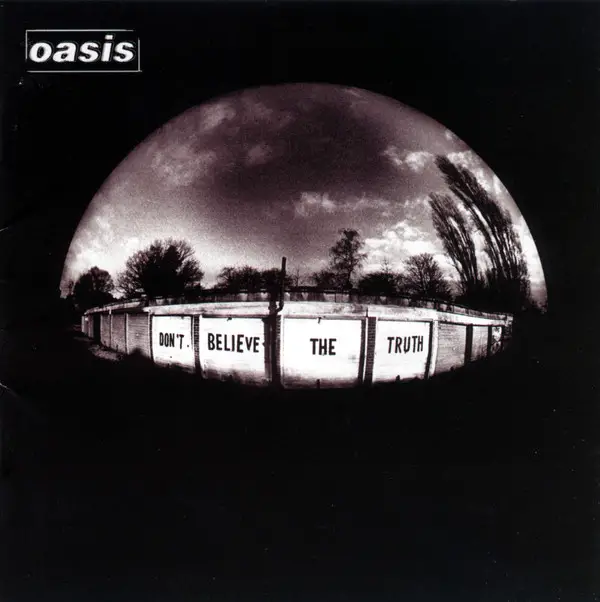 Don’t Believe The Truth (2005)
Don’t Believe The Truth (2005)
After years of lineup changes, tabloid fodder, internal arguments turned public, and the seemingly career-ending voice issues Oasis’ frontman, Liam Gallagher, was facing, most had left Oasis for dead by the time 2005 had rolled around. The band’s previous record, Heathen Chemistry, had sold well, but the three-year touring cycle in support of the record featured some of the band’s most lazy, and uninspired shows, and as mentioned earlier, Liam could hardly sing, having seen his once unique voice succumb to years of drug and alcohol abuse, coupled with poor technique. So, when Liam managed to sort his voice out — people were surprised — but not nearly as surprised as they were when Oasis dropped Don’t Believe The Truth on the world, in 2005. In the years since Heathen Chemistry, long-time drummer, Alan White, had left the band, and Zak Starkey had replaced him, in 2004. While White was a fantastic drummer in his own right and was a huge part of the classic Oasis sound, Starkey really seemed to mesh well with other newcomers, Andy Bell, and Gem Archer, and as a unit, Oasis was perhaps stronger than ever to the point.
Once Liam sorted his voice out, it was with renewed vigor that Oasis hit the studio, and laid down tracks such as “Turn Up The Sun,” “The Importance Of Being Idle,” “Part Of The Queue,” “Mucky Fingers,” and “Lyla.” Mentioned previously was the maturity the newcomers, Bell and Archer, brought to the band, and with that, they also brought songwriting ability, and Don’t Believe The Truth, for the first time, finds Oasis operating more as a unit than ever before, rather than relying on the merits and talents of Noel Gallagher alone. Don’t Believe The Truth finds Oasis reclaiming their throne as a world-beating band, and reminded the new wave of Indie Rock which was sweeping the UK at the time that Oasis was a force to still be reckoned with. At the time, Don’t Believe The Truth was hailed as the band’s best effort since (What’s The Story) Morning Glory?, and that assessment still holds up to this day, and we actually feel Don’t Believe The Truth is better than those early records, as it features a band peaking in terms of renewed creativity, depth of songwriting, and technical maturity.
1)  Be Here Now (1997)
Be Here Now (1997)
At the top of the heap, as they say, is Oasis’ 1997 cocaine-fueled odyssey, Be Here Now. This record has experienced a strange trajectory. For starters, it came out in the wake of Oasis’ megahit album, (What’s The Story) Morning Glory?, which saw Oasis literally take over the world, and change the music scene as it was known going forward. Make no mistake about it — at that point, Oasis was the biggest band on planet earth. So, on the heels of their massive gigs at Knebworth Park, when Oasis entered the studio to record Be Here Now, expectations were unrealistically high for all of those involved. There were issues, however, namely, drugs, alcohol, notorious infighting, and constant tabloid fodder which were starting to become prevalent. Oasis to that point was a band that perpetually danced atop a razor’s edge, and they were coming perilously close to either falling over the side or impaling themselves. Nevertheless, Oasis got it together and did enter the studio to record what would become Be Here Now, and the results were nothing short of a watershed moment.
Initially, the album sold in droves, and people loved it…until…they suddenly didn’t. While on tour for the record, critics and some fans soon began to turn on Be Here Now, naming it overly long, sickeningly indulgent, generally bloated, and heavily overproduced, and in a sense, they weren’t wrong, but still, context is everything, and the negative reviews thrown this albums way are generally myopic. I mentioned before that I would explain why we placed (What’s The Story) Morning Glory? where we did, and so, let’s get to that now. In retrospect, and no one seems to want to address this, or admit it but (What’s The Story) Morning Glory, and Be Here Now are very similar albums in terms of songwriting, production values, and overall sonic quality. I say “similar,” because we believe that Be Here Now took it to the next level, and bettered (What’s The Story) Morning Glory? Ultimately, songs such as “Champagne Supernova,” are just as “bloated” and “wall of sound to the max” as anything on Be Here Now, but Be Here Now came second, and thus had the unfortunate displeasure of being the one to suffer the backlash.
In truth, Oasis didn’t go “overboard” on Be Here Now, honestly, they were always a bit “overboard,” and they were just continuing to do what they had been doing, and they did so to great success. The backlash thrown this album’s way serves as classic hypocritical fodder, which critics displace onto undeserving bands when they decide it’s time for them to flex. It’s also worth noting that Be Here Now came out just as a new wave of Indie Rock was hitting the scene, and thus, while Oasis was doing what it had always done, suddenly, it was now “bloated.”
Ultimately, Be Here Now is Oasis’ most badass record, turned-up-to-ten record, with tracks such as “D’You Know What I Mean?,” “My Big Mouth,” “Be Here Now,” and “All Around The World” serving as notice of just how great Oasis was at this time, and their live performances such as G-Mex in 1997 hold serve. A carefully crafted narrative by critics has been laid forth over the years regarding this record, but we’re here to tell you today — Be Here Now is a better record than (What’s The Story) Morning Glory?, and Definitely Maybe. Furthermore, Be Here Now is “overblown,” or “overindulgent,” then we ask you, what are Oasis’ first two albums, if not the same? Be Here Now is a great album — a generational album — but it’s sadly not thought of as such. Go listen to Be Here Now again, with fresh ears. Tell us we’re wrong.
When we think back on Oasis, ultimately, they burned too brightly, and the band imploded in spectacular fashion, which oddly, was really a very Oasisian thing to do, wasn’t it? It’s been said that for the members of Oasis, being a part of that band was something of a war of attrition, and really, could anyone have really imagined the end of Oasis coming any other way than Liam and Noel Gallagher bursting in a ball of rage after Liam drunkenly smashed Noel’s guitar in Paris?
When it comes down to it, no one can deny that Radiohead, Suede, Blur, and The Verve were, and are great bands, and no one will ever mistake Noel Gallagher as a virtuoso guitarist, but, still, as a songwriter, Noel Gallagher is unmatched, and while he may not be Jimi Hendrix on guitar, Noel’s deft ability to write catchy licks perfectly matched his songsmith. Case in point — the song “Supersonic” — now that I’ve mentioned it, you’ll have that classic, yet simple guitar solo stuck in your head for days. And when it came to Liam Gallagher, there have been many frontmen before, and after him, but his voice, style, and mentality defined a generation, and in that regard, Liam Gallagher is unmatched.
While it’s wholeheartedly true that Oasis’ contemporaries may have deservedly curried the favor of critics, the truth of the matter is that Oasis always was, and still is a fan’s band. The boys in Oasis at the heart of it were five lads from Manchester. They loved beer, cigarettes, and Rock music, and if you didn’t — they’d put you on your ass, steeped in a pool of your own blood, with zero regard for your thoughts or feelings on the matter. That’s Rock ‘N’ Roll. That’s Oasis.
Pound for pound, day after day, year after year, Oasis has the songs, they have the albums, and they are the band which defined a generation — no other band of their era can say that. Oasis, as a band, ceased to exist thirteen years ago, and still, they’re front-page news, still, people beg and plead for reunions. Over the years, there have been many bands, some great, some not, but few can say they took over the world in the way that Oasis did, and few ever will again.
When it comes to Oasis, say what you will, but they had the tunes, and the guts that we will remember, and when the day comes that the Gallagher brothers decide to take the stage again — make no mistake — the world will be watching their every move, with bated breath, and their contemporaries will be marking the day with green-eyed envy. Fans, rivals, and critics alike, will be, as they say — Mad Fer It.
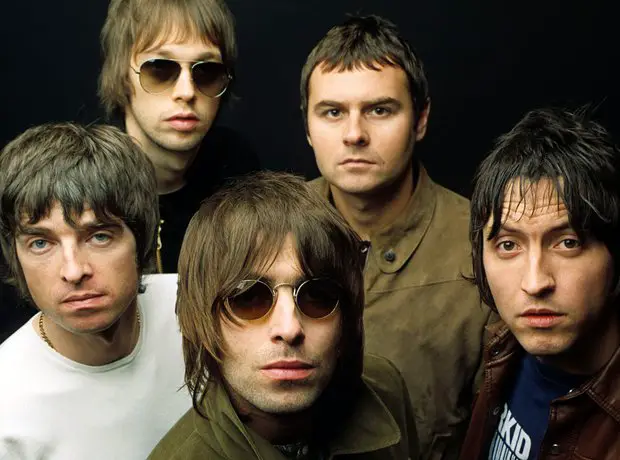
– Andrew Daly (@vwmusicrocks) is the Editor-in-Chief for www.vwmusicrocks.com and may be reached at andrew@vinylwriter.com
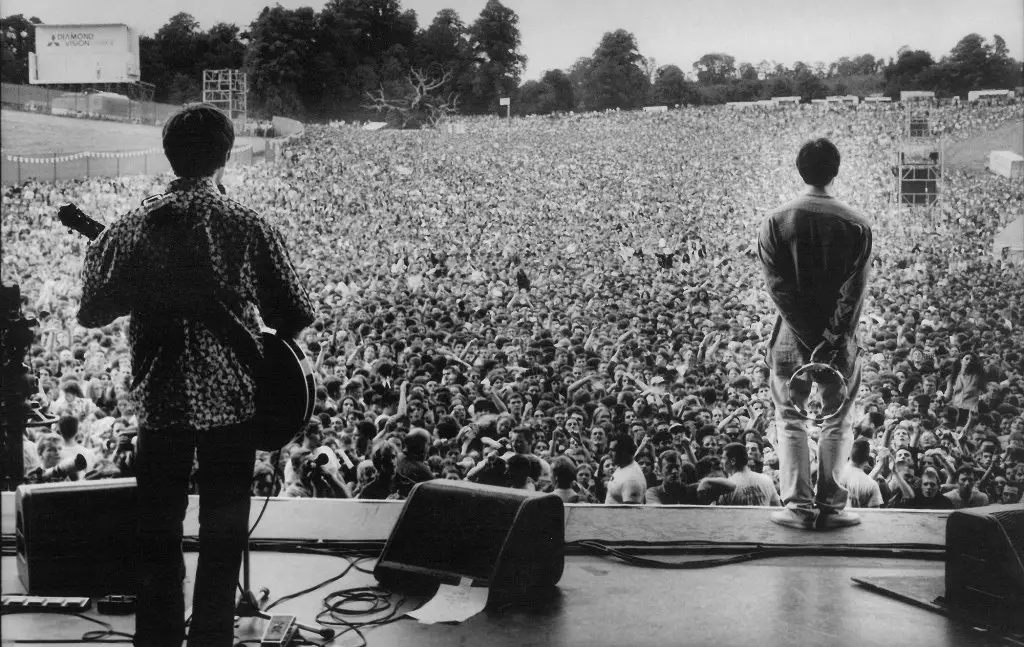
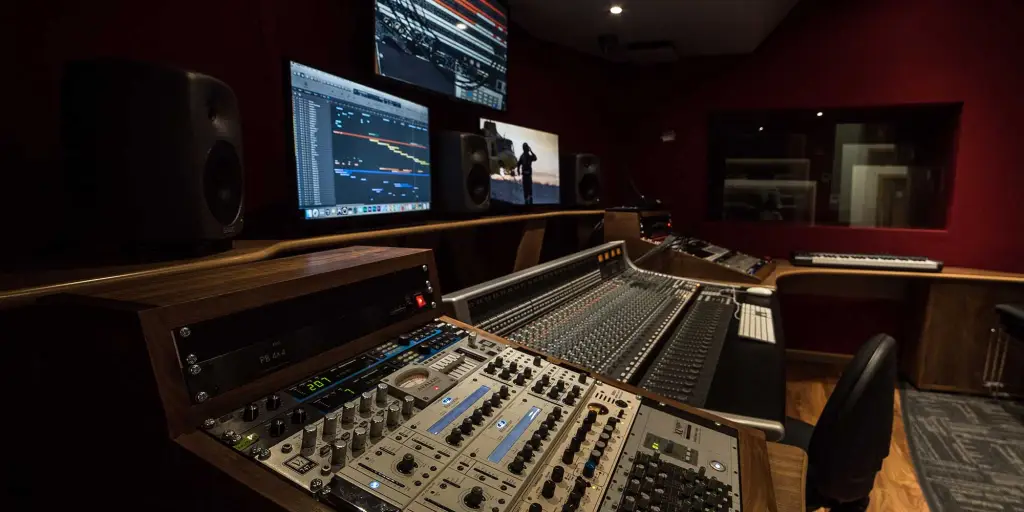


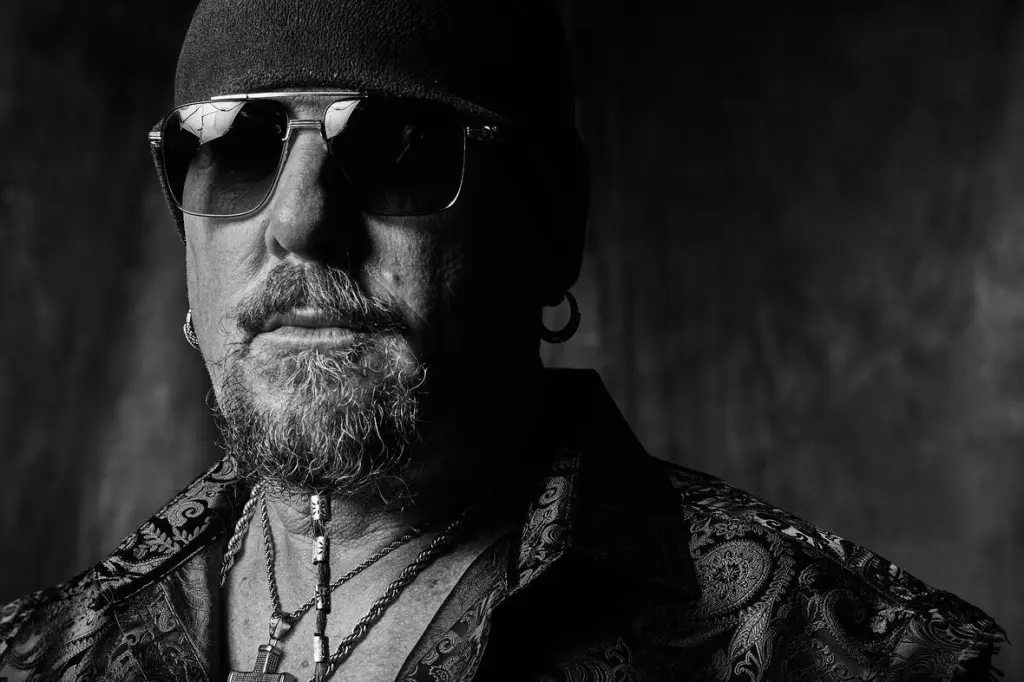
Leave a Reply